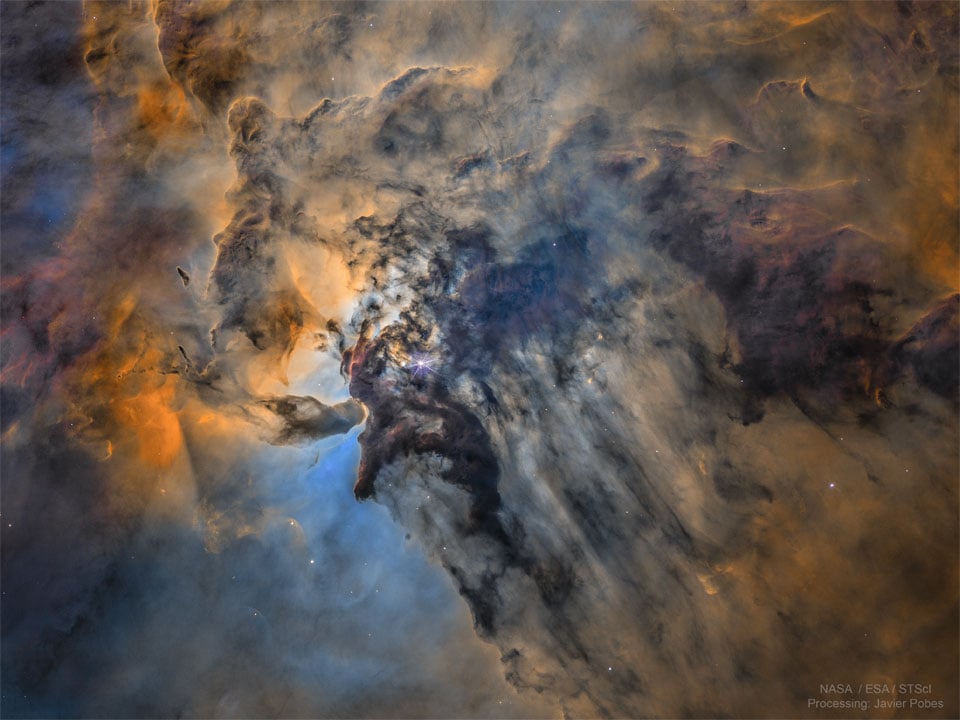22 minute pulses? Someone out there is playing through Outer Wilds.
Space
Share & discuss informative content on: Astrophysics, Cosmology, Space Exploration, Planetary Science and Astrobiology.
Rules
- Be respectful and inclusive.
- No harassment, hate speech, or trolling.
- Engage in constructive discussions.
- Share relevant content.
- Follow guidelines and moderators' instructions.
- Use appropriate language and tone.
- Report violations.
- Foster a continuous learning environment.
Picture of the Day
 The Busy Center of the Lagoon Nebula
The Busy Center of the Lagoon Nebula
Related Communities
🔭 Science
- [email protected]
- [email protected]
- [email protected]
- [email protected]
- [email protected]
- [email protected]
- [email protected]
- [email protected]
- [email protected]
🚀 Engineering
🌌 Art and Photography
Other Cool Links
That was such a good game
Road trip! Let's go check it out!
How much should I pack? 2, 3 changes of clothes?
I don't know, I always over pack, so...
Make sure to also grab 100 tampons, just in case.
Ribbit
We're going on an adventure.
Spin on the Y axis? We wouldn't see what isn't shot at us.
the great cosmic wobble, of course!
It's the road crew lights that the Vogons put up whenever they are about to put in a new hyperspace bypass.
Has anyone seen my towel?
It's our galactic smoke detector signaling that it needs a new battery.
This is super neat. I hope they're able to figure out what it is.
Aliens! /s
I know you're being sarcastic, but that was my first thought as well haha
GPM J1839–10 takes 22 minutes between pulses. We have no idea what kind of physics or what kind of objects can power that.
[Googles name of object.] 2nd result:
The newfound object is a type of neutron star known as a magnetar.
Science!
Read the article:
Another option involving them is the magnetar, a neutron star with an intense magnetic field that's prone to energetic outbursts. But those outbursts also generate more energetic photons, and the researchers checked the site of GPM J1839–10 with an X-ray telescope and saw nothing. Plus, magnetars are thought to rotate more quickly than the 22-minute gap implies, so they're probably out as well.
Just because some random Google result says it’s a magnetar doesn’t make it true. Considering the team that discovered it doesn’t make that claim and as far as I’m aware no one else has looked at this particular star, I think it unlikely that there’s a definitive, widely accepted explanation.
This is why I don't trust Google excerpt results or Ai answers despite being widely accepted. They miss nuance
These days I feel like they're flat out wrong nearly a third of the time
That's the most likely answer, but they're not certain. As they don't even have a solid theory of how a star can spin so slowly and still be this active.
If it isn't a magnetar, my money's on it being a binary object like a quasar orbiting something massive. The massive object will be stabilising the quasar's spin in much the same way our Moon stabilises Earth's axis somewhat, but the beam of this object won't cross Earth unless it's at the right point in its orbit.
One might expect a 22 minute orbit around a massive object to have decayed a bit over 35 years (that would definitely be something to test for), but there's nothing that says the orbit or rotation period is 22 minutes, only that there's a resonance of 22 minutes coming from some interaction or another.
That's just them skipping to the next episode.
I'd really be getting scared if it was every 33 minutes..cylons? No thanks
It's a buoy that indicates the deep end and the danger of sharks.
that's just my uncle Larry
So sort of like the space Willie Nelson.
